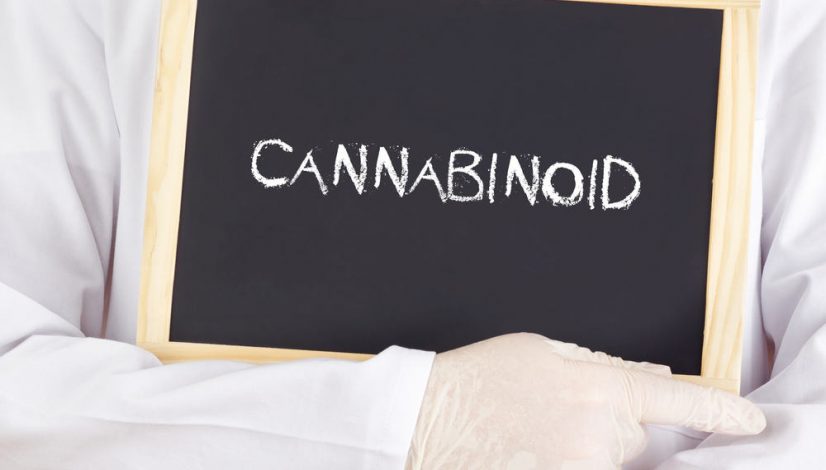The Ultimate Guide to Cannabinoids in Cannabis
The field of cannabis research is vast and diverse. From biochemical studies of the plant itself to physiological and chemical studies of its pharmacology to psychological and social research into its effects, researchers studying cannabis produce the knowledge at the foundation of industry innovation and public policy. Yet perhaps the most important research being done in this new era of expanded access to legal cannabis pertains to just one facet of the plant: the humble cannabinoid. Cannabinoids, the chemicals that qualify the plant as a drug, are the sine qua non of the commercial and medical significance of cannabis.
The Ultimate Guide To The Cannabinoids In Cannabis
Despite their importance, however, our scientific understanding of cannabinoids has been stunted, in the United States, by prohibition and elsewhere, by restrictive regulations. The result is a literature on the subject that’s patchy and inconsistent, yet reflective of the market’s interest in THC and CBD. Toppling regulations and expanding legalization, however, have made it possible for researchers to conduct more thorough investigations into other cannabinoids.
Exploring the world of cannabinoids can be rewarding for anyone interested in cultivating a more intentional relationship with cannabis. Knowledge about precisely how and why certain strains and products produce their effects is empowering.
For those ready to take the plunge, here’s the ultimate guide to the cannabinoids in cannabis. We start with an overview of cannabinoids in general, how and why they react with our bodies, and then dive into the most important cannabinoids. As a bonus for all you vape-fans and dab-heads, we list the boiling point for each cannabinoid for easy reference.
What is a Cannabinoid?
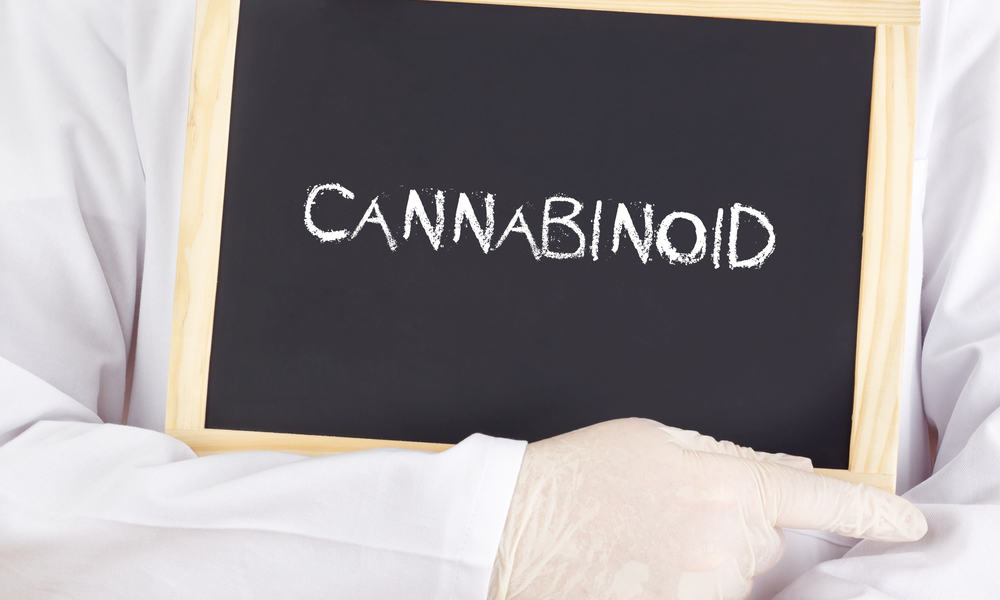
Cannabinoids get their name less from what they are and more from what they do. They’re a class of chemical compounds the cannabis plant naturally produces. But they have the unique property of being able to interact with receptors in our cells. These interactions, through a complex series of pathways, alter the release of chemicals in the brain. These alterations, in turn, produce a wide array of effects throughout the body.
According to a recent tally, scientists have successfully isolated 113 discrete cannabinoids. Many of them exhibit their own distinct effects. Of those 113, THC, CBD and CBN have the most substantial body of research behind them. CBD and CBN were to first cannabinoids researchers identified when they discovered cannabinoids in the 1940s. It would take until 1964 for researchers to correctly determine the structure of THC.
From a scientific and legal perspective, there’s a difference between the cannabinoids the plant naturally produces and those produced synthetically. The former are called “phytocannabinoids.” Phytocannabinoids are the focus of this guide.
What is The Endocannabinoid System?
The endogenous cannabinoids system, or endocannabinoid system (ECS), is the network of cell receptors throughout the body that interact with cannabinoids. Without the system, cannabinoids would do nothing for our bodies and cannabis would be irrelevant as a drug. Although, they are still quite useful as a crop.
It would be a mistake, however, to think that the ECS only exists to react with the cannabinoids in marijuana. The human body, in fact, produces its own cannabinoids, called endocannabinoids.
Interestingly, we know less about the cannabinoids our own bodies produce than we do about those the marijuana plant produces. And that’s because the discovery of cannabinoid receptors didn’t take place until 1988. It was this important discovery that initiated the search for our bodies own endocannabinoids.
Until then, scientists believed a kind of generic interaction between cells and plant cannabinoids caused the psychological and physiological effects of marijuana. Now, we understand that there are highly specific chemical mechanisms responsible for those effects.
Two decades later, though, we still know very little about the how our bodies actually make their own cannabinoids. But we do know what some of them are. Studying how our bodies’ endocannabinoids interact with the ECS and what effects these interactions is crucial for advancing our understanding of the therapeutic and recreational effects the phytocannabinoids in marijuana produce.
Cannabinoid Receptors Explained
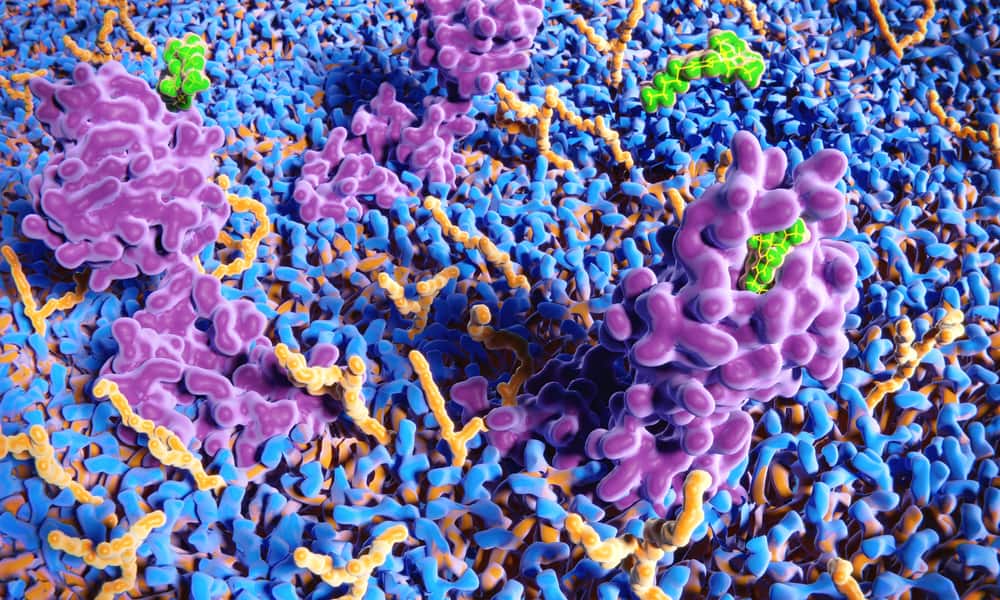
As previously noted, the network of receptors which comprise the ECS is distributed throughout the body. And it consists of two classes of receptors found in particular locations in the body.
One of the classes of receptors exists primarily in the brain. These are cannabinoid receptor type 1, or CB1 receptors. Besides the brain, these receptors hang out in parts of the eye and retina and in both male and female reproductive systems.
The second class of receptors, cannabinoid receptor type 2, exist primarily in the immune system. CB2 receptors exist in the greatest concentration in the spleen. Current research involving animal models indicates that these receptors are responsible for the significant anti-inflammatory properties of cannabis, especially the CBD cannabinoid. They may also be the cause of many other medicinal and therapeutic effects.
There are the two known types of cannabinoid receptors. However, there is increasing evidence that there may be yet more types.
Phytocannabinoids: The Most Important Cannabinoids in Cannabis Plants
The cannabis plant produces its own cannabinoids. These naturally occurring chemicals go by the name of “phytocannabinoids.” Because these chemicals are structurally analogous to the endocannabinoids our own bodies produce, they are able to bind with the CB1 and CB2 receptors throughout the endocannabinoid system. But because they are not the same, they can produce unique effects specific to cannabis, such as the high recreational users seek or the pain-relief medical users seek.
Cannabis plants produce their cannabinoids in the highest concentrations in a thick, sticky resin. The resin itself is the product of gland-like structures called trichomes. Trichomes appear on the flowering buds of cannabis plants. They look like tiny crystal mushrooms and are extremely delicate. The size and density of trichomes on cannabis flowers is a key indicator of the plant’s cannabinoid concentration. More trichomes means more cannabinoid-rich resin.
Cannabinoids, of course, do not exist only in trichomes. They can be found in varying concentrations throughout the leafy structures of the plant. But they exist in the highest concentrations in the flowering parts of female marijuana plants.
Our guide to the most important cannabinoids in cannabis begins with the most studied and significant cannabinoids, CBD and THC. Then we take a look at other, lesser-appreciated cannabinoids, highlighting their uniqueness and potential future appeal.
THC (Tetrahydrocannabinol) / 315°F
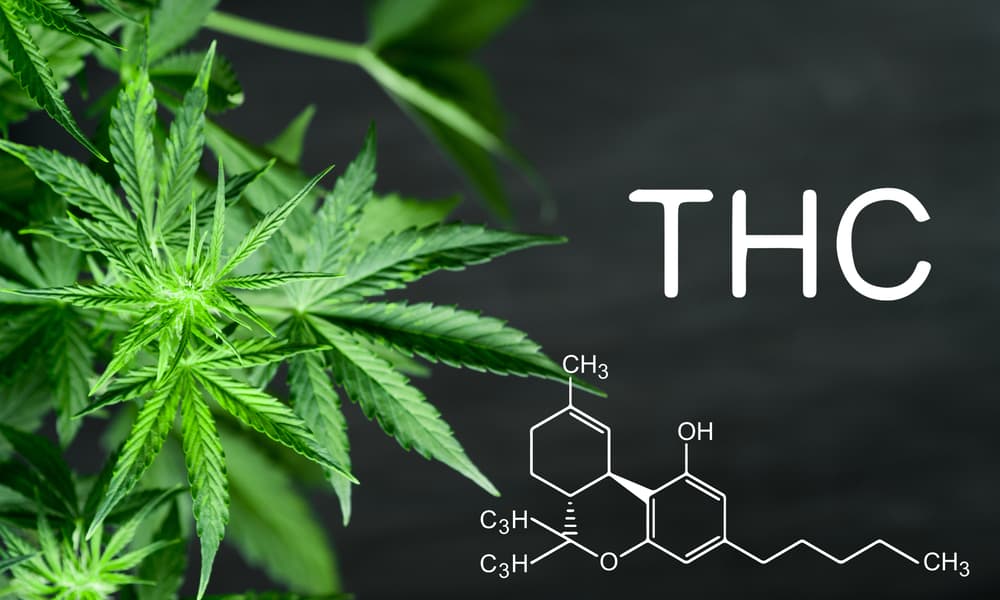
If you know the name of a single cannabinoid, it’s probably THC. And for good reason. Tetrahydrocannabinol is one of the very few cannabinoids that are psychoactive. Psychoactivity indicates that a cannabinoid can produce a euphoric sensation commonly called a “high.” And THC is the only psychoactive cannabinoid that exists in a high enough concentration in dried marijuana flower to make smoking or ingesting the plant worth it.
Hence, THC is the most sought after cannabinoid for recreational cannabis users. In fact, many of the current trends among recreational cannabis users involve perfecting the extraction and consumption of THC. The rise in the popularity of cannabis concentrates, extracts that remove cannabinoids from excess plant matter, is just one example.
THC produces its psychoactive effects by binding to CB1 receptors in the brain. This interaction induces an alteration in the release of chemicals in the brain. These alterations, which notably include an increase in dopamine release, cause the variety of psychological effects recreational cannabis users enjoy. Alterations in memory, movement, mood, perception and cognition all result from the binding of THC to CB1 receptors. These psychological effects also open doors to many therapeutic uses for THC.
So much more could be said about tetrahydrocannabinol, the psychoactive cannabinoid that dominates much of the cannabis industry worldwide. Check out our complete guide to THC.
CBD (Cannabidiol) / 356°F
When it comes to the medicinal applications of cannabis, no cannabinoid is more significant than cannabidiol. Among the first cannabinoids discovered, CBD continues to be one of the most intensively researched chemicals in the marijuana plant.
Crucially, CBD is non-psychotropic. This means that cannabidiol does not have any of the psychoactive effects of THC. Yet CBD goes one step further. It’s not just that CBD doesn’t produce a high, it also counteracts the cognitive effects of THC.
The importance of CBD’s lack of psychoactivity cannot be overstated. For one, it makes the cannabinoid an exception to laws that ban marijuana on the basis of the presence of THC. This accounts for why research into cannabinol has advanced further than research into other cannabinoids. And it also accounts for the wide availability of legal CBD-based medicines and supplements. Many medical cannabis patients find the psychoactive effects of THC undesirable. Thus, CBD-only products offer the medical and therapeutic benefits of cannabis, without the high.
CBD is primarily extracted from hemp plants, which possess just trace amounts of THC. But breeders have also begun cultivating CBD-dominant strains of cannabis. These CBD-dominant, or 1:1 THC-CBD strains, are increasingly popular among medical cannabis patients.
The well-documented medical applications of CBD are too numerous to detail here. Check out our complete guide to CBD to learn all about the exciting research into CBD.
CBG (Cannabigerol)
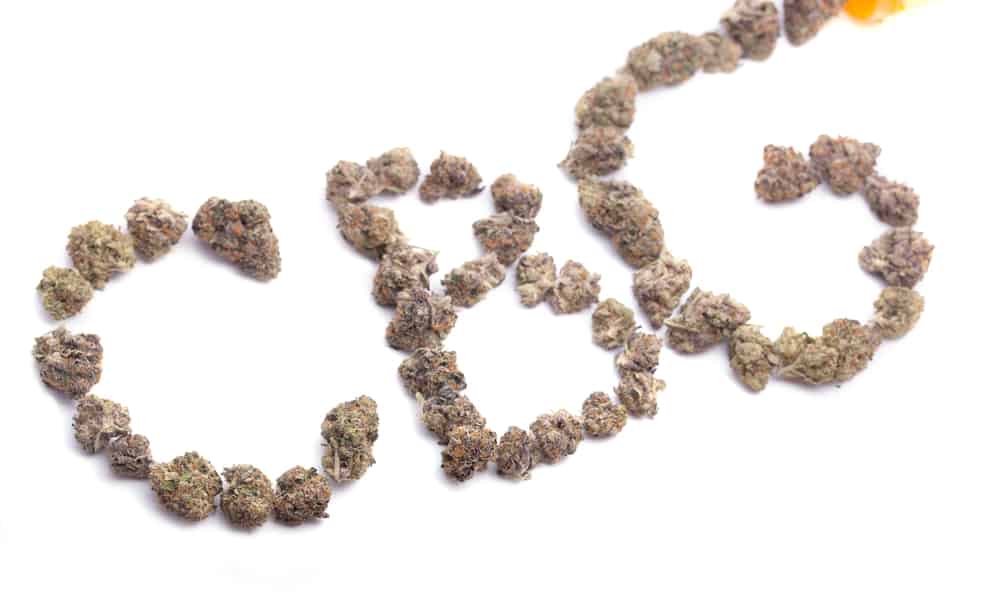
Mature cannabis plants only posses 1 percent or less of CBG, or cannabigerol. But that’s not because the plant doesn’t produce very much of it. Rather, maturing plants produce quite a lot of CBG. Eventually, however, virtually all of the CBG produced initially has converted to other cannabinoids. Hence the nicknames CBG has earned. Some call it the “mother cannabinoid,” while others consider it the “stem cell” cannabinoid.
CBG converts into many derivative cannabinoids. But it primarily turns into THC and CBD. This is what makes the cannabigerol cannabinoid so important. Figuring out which factors control which path CBG will take has helped plant scientists “direct” cannabinoid production, leading to marijuana strains with high CBD and low THC and vice versa. CBG itself is non-psychoactive.
Excitingly, CBG has also shown a number of promising medical applications. Research has suggested CBG could help treat cancer and a variety of bowel and bladder diseases, glaucoma, pain, anxiety, and inflammation.
CBN (Cannabinol) / 365°F
CBN is unique among the cannabinoids listed here for one reason. It is the only one that does not derive from cannabigerol (CBG), the “stem cell” cannabinoid. Rather, CBN forms from the natural degradation of THC.
Oxidation, light and exposure to air cause THC to degrade. Dried marijuana flower, in other words, is constantly losing THC as it breaks down into CBN. That’s why proper storage is so key to maintaining the potency of dried cannabis buds. Since cannabinol is effectively non-psychoactive, its presence represents a loss of potency. Fresh plants an dried marijuana flower, therefore, possess only trace amounts of CBN.
Cannabinol, despite being a sign that weed has gone bad, does have some important medical potential. It’s a sedative, works as an antibiotic, and even shows promising results as an analgesic.
CBC (Cannabichromene) / 428°F
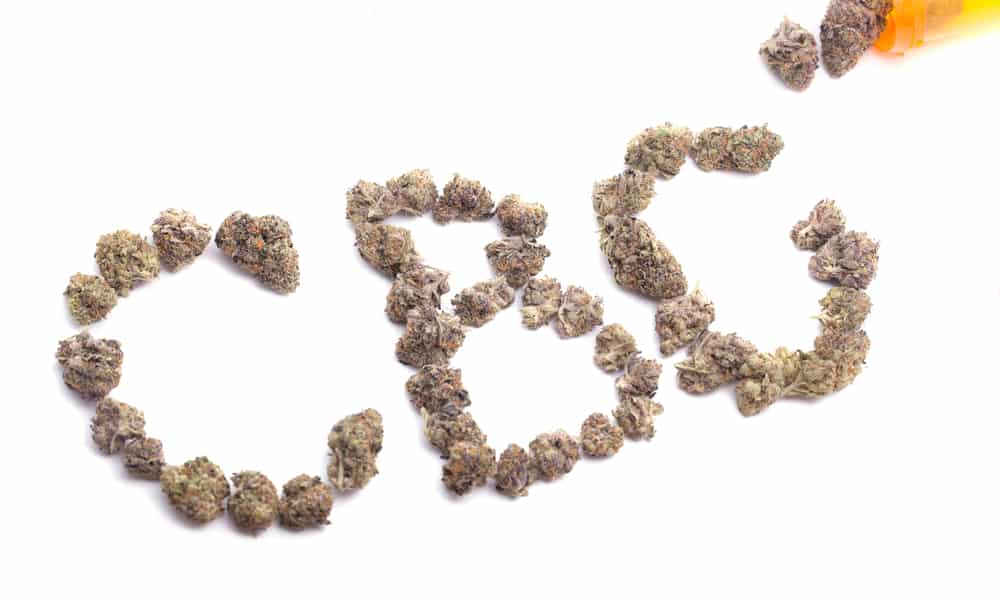
Cannabichromene is, like CBD, a non-psychoactive cannabinoid. Unlike CBD however, CBC has no effect on the psychoactive effects of THC. Rather, it appears that THC influences CBC in a way that enhances its anti-inflammatory activity.
This interplay between two cannabinoids, in this case, THC and CBC, is a good example of the phenomenon researchers call the “ensemble effect.” The ensemble effect postulates that the efficacy of a given cannabinoid depends on interactions with other cannabinoids.
Hence the “whole plant” approach advocated by many cannabis caregivers. Isolated extractions and preparations of a single cannabinoid, they argue, eliminate these important inter-cannabinoid relationships.
Additionally, CBC is unique for the fact that it binds to receptors beyond those of the ECS. Researchers believe these interactions may be behind the medicinal properties of CBC. In the consumer market, CBC’s anti-inflammatory, anti-fungal and antibiotic properties make extractions of this cannabinoid popular for use in cannabis topicals.
THCV (Tetrahydrocannabivarin) / 428°F
The “-varins” are a class of phytocannabinoid that are isometric homologues of the root compound, in this case THC. And given it’s name, you might assume THCV shares psychoactive powers with its potent counterpart, THC.
Well, yes and no. In fact, this is the main debate surrounding the properties of THCV. Some studies report that this cannabinoid acts as a THC antagonist at CB1 receptors. This means it would attenuate and reduces the psychoactive effects of THC.
Other studies, however, have found that THCV can act as a particularly potent psychoactive cannabinoid. These studies claim THCV is actually stronger than THC, producing short-lived but intensely euphoric and cerebral highs.
Other researchers have proposed a synthesis of the two models, arguing THCV behaves like a cross between CBD and THC. From the former, it takes its modulating powers. Acting like THC “lite,” THCV like CBD can dampen the effects of a strong high. Yet at higher doses, THCV kicks into a psychoactive stimulant in its own right.
Δ-8-THC (Delta-8-Tetrahydrocannabinol) / 347°F

A newcomer on the recreational scene and something of an unguarded secret among dabbers, delta-8-THC is a different psychoactive cannabinoid with its own set of therapeutic benefits when compared to delta-9 THC.
Delta-8-THC is an isomer of the more common delta-9-THC, outlined above. Delta-8 is not as strong from a psychoactive perspective as delta-9-THC, but it comes with added therapeutic benefits. Indeed, it’s weaker psychoactivity may be a therapeutic benefit in itself for patients who do not desire such effects.
Current research has strongly correlated delta-8-THC with the death of cancer cells and reductions in tumor size in mice. In Jerusalem, researches have claimed that delta-8-THC cancer treatments have been successful in 480 cases. The cannabinoid is also a powerful antiemetic capable of drastically reducing nausea and vomiting. This, along with its ability to stimulate appetite, make it extremely viable as a treatment for the harmful side effects of cancer treatments.
CBDV (Cannabidivarin) / 356°F
Cannabidivarin is homolog of cannabidiol (CBD) that heightens the powerful anticonvulsant effects of CBD. Totally non-psychoactive, there are no legal restrictions on this cannabinoid. As a result, major pharmaceutical companies are actively researching this cannabinoid as a treatment for adult and child epilepsy.
This means it can help reduce the severity of seizures for people suffering from epilepsy. The CBDV cannabinoid has also shown promise as an anti-nausea medicine. However, pharmacologically significant amounts of CBDV are hard to come by in most marijuana strains. The highest levels of CBDV come from landrace indica strains in the Himalayas.
THCA (Tetrahydrocannabinolic Acid) and CBDA (Cannabidiolic Acid) / THCA 220°F, CBDA 248°F

The “A” suffix denotes the naturally occurring, acidic form of these phytocannabinoids. In order for the body to metabolize cannabinoids, they have to be in a form capable of entering the bloodstream and binding to cell receptors.
Specifically, the acidic form of these cannabinoids contains a carboxyl group. Exposing acidic forms of cannabinoids to heat causes them to lose the carboxyl group, converting them into a form the body can use. This process is called “decarboxylation.”
You may have heard that term thrown around in discussions about preparing marijuana edibles. Raw cannabis must first be activated, or “decarbed,” in order to make the cannabinoids chemically active in the body.
There are acidic versions of many of the major cannabinoids in the plant. All of them convert to pharmacologically relevant forms via heat. Note the low temperatures, which indicate the point of conversion.
Recent studies, however, have begun to examine the effects of these “raw” forms of cannabinoids. The findings point to the need for further research. THCA has proven to be a good antiemetic and anti-inflammatory compound in its own right. CBDA has shown potential as a possible cancer treatment.
Final Hit: The Ultimate Guide to The Cannabinoids in Cannabis
From what they are to what they do and why, we’ve looked at the most significant cannabinoids in the cannabis plant. We hope this exploration of the world of cannabinoids has been rewarding and helps you cultivate a more intentional relationship with your cannabis lifestyle. Use this knowledge to make the best choices about the cannabis products that are right for you.
The post The Ultimate Guide to Cannabinoids in Cannabis appeared first on High Times.

